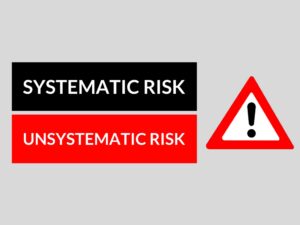Engaging Intro:
Risk and uncertainty are two terms commonly used in decision-making and financial contexts. While both involve potential outcomes, they differ in their degree of predictability and knowledge. In this article, we will explore the differences between risk and uncertainty, providing examples and discussing their respective uses.
What is/are Risk?
Risk refers to the possibility of an event or action resulting in a negative or undesirable outcome. It is usually quantifiable and can be assessed using statistical methods or historical data. Risks can be managed through various strategies such as risk mitigation or risk transfer.
Examples of Risk:
- Investing in the stock market
- Driving a car
- Launching a new product
Uses of Risk:
Risk analysis and management are crucial in various industries, including finance, insurance, and project management. Understanding and evaluating risks allows businesses to implement appropriate measures to minimize potential losses or negative impacts.
What is/are Uncertainty?
Uncertainty refers to situations where the outcomes or events are unpredictable or unknown. Unlike risk, uncertainty cannot be easily quantified or measured due to a lack of data or information. Uncertainties are often characterized by ambiguity and complexity.
Examples of Uncertainty:
- Economic recessions
- Political instability
- Technological disruptions
Uses of Uncertainty:
Uncertainty is a common aspect of strategic decision-making, as businesses need to anticipate and adapt to unexpected changes. Companies may develop contingency plans or scenario analyses to navigate uncertain environments effectively.
Differences Table:
| Difference Area | Risk | Uncertainty |
|---|---|---|
| Degree of Predictability | Predictable outcomes based on probability analysis | Unpredictable or unknown outcomes |
| Quantifiability | Measurable using statistical methods or data | Difficult to measure due to lack of data |
| Information Availability | Information is available to assess risks | Lack of information or incomplete knowledge |
| Nature | Can be identified and defined | Often vague and ambiguous |
| Management Approach | Risks can be managed through strategies | Uncertainties require adaptability and flexibility |
| Outcome Impact | Outcome impact can be estimated | Outcome impact is highly uncertain |
| Response Strategy | Specific response strategies can be planned | Contingency plans and scenario analyses are employed |
| Data Availability | Relies on historical or empirical data | Data may be scarce or nonexistent |
| Perception | Risk perception varies among individuals | Uncertainty may create anxiety and fear |
| Decision-making | Decisions can be made based on calculated risks | Decisions are more challenging due to unknown outcomes |
Conclusion:
In summary, risk and uncertainty differ in terms of predictability, quantifiability, information availability, nature, management approach, outcome impact, response strategy, data availability, perception, and decision-making. Risks can be measured and managed, while uncertainties require adaptability and contingency planning.
People Also Ask:
1. What is the main difference between risk and uncertainty?
Risk involves predictable outcomes and can be measured, while uncertainty involves unknown or unpredictable outcomes and is difficult to quantify.
2. How do risks and uncertainties affect decision-making?
Risks can be factored into decision-making based on their probabilities, while uncertainties make decisions more challenging due to the lack of knowledge about potential outcomes.
3. Are risks and uncertainties always negative?
Not necessarily. Risks can also present opportunities, such as potential returns on investments. Uncertainties can open doors for innovation and adaptation.
4. Can risks and uncertainties be entirely eliminated?
No, complete elimination is rarely possible. However, risks can be managed and uncertainties can be reduced through thorough analysis and strategic planning.
5. How can businesses prepare for uncertainties?
Businesses can prepare for uncertainties by developing flexible strategies, scenario analyses, and contingency plans. Regular monitoring of the external environment can also help identify potential uncertainties.


